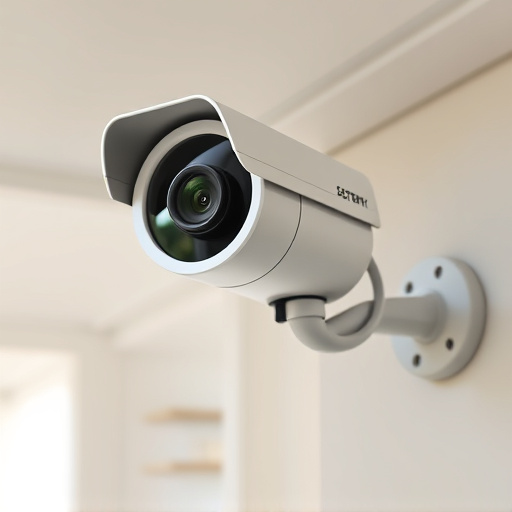Motion Activated Dummy Security Cameras provide an affordable and effective way to enhance commercial property security. Strategically placed in high-risk areas, these realistic surveillance replicas deter intruders with their motion-activation feature, capturing high-resolution images or videos day or night. Regular testing, maintenance, and proper placement ensure they serve as a reliable first line of defense, offering businesses enhanced security and peace of mind while adhering to privacy best practices.
“Enhance your commercial property’s security with Motion Activated Dummy Security Cameras—a smart, cost-effective solution. This comprehensive guide explores how these cameras deter crime and boost safety without breaking the bank. From understanding their advanced motion detection to setting up and maintaining your system effectively, we cover it all. Uncover the benefits, legal considerations, and best practices for commercial property surveillance, empowering you to make informed decisions for a secure business environment.”
- Understanding Motion-Activated Dummy Cameras: A Commercial Property Owner's Guide
- Benefits of Using Dummy Security Cameras for Commercial Spaces
- Setting Up and Maintaining Your Dummy Camera System Effectively
- Legal Considerations and Best Practices for Commercial Property Surveillance
Understanding Motion-Activated Dummy Cameras: A Commercial Property Owner's Guide
Motion-activated dummy security cameras are an innovative solution for commercial property owners looking to enhance their security measures. These cameras mimic real surveillance equipment, providing a powerful deterrent against potential intruders or vandals. By programming them to activate upon motion detection, these dummy cameras can effectively monitor your property 24/7, capturing high-resolution images or videos whenever someone enters the designated area.
Understanding how these cameras work is essential for optimal utilization. Commercial property owners should consider factors like camera placement, sensitivity settings, and storage options for captured footage. Regular maintenance and testing ensure the cameras function correctly when needed. With proper integration into your security system, motion-activated dummy security cameras can serve as a cost-effective and reliable way to protect valuable assets, offering peace of mind and enhanced safety for businesses.
Benefits of Using Dummy Security Cameras for Commercial Spaces
Dummy security cameras, especially those that are motion-activated, offer a cost-effective and highly effective solution for commercial property protection. Unlike traditional surveillance systems, which can be expensive to install and maintain, dummy cameras provide an affordable alternative. They serve as powerful deterrents against potential thieves or vandals, acting as a visual reminder of the presence of security monitoring.
These cameras are designed to mimic real security equipment, tricking intruders into believing that their actions are being recorded. The motion-activation feature ensures they capture any suspicious activity, providing valuable evidence for investigators. This technology is particularly beneficial for commercial spaces with high foot traffic or valuable assets, enabling businesses to enhance their security measures without breaking the bank.
Setting Up and Maintaining Your Dummy Camera System Effectively
Setting up and maintaining a dummy camera system, specifically Motion Activated Dummy Security Cameras, requires careful consideration to ensure optimal protection for your commercial property. The first step involves strategically placing the cameras in high-risk areas, such as entrances, exits, and loading docks. Positioning them at eye level and with clear lines of sight discourages potential intruders and provides a true sense of security. Additionally, mounting them on solid surfaces or structures like walls or ceilings ensures stability and reduces the risk of damage or tampering.
Regular maintenance is crucial to keep your dummy camera system effective. This includes periodic cleaning to prevent dust or debris buildup, which can obstruct the lens and reduce image quality. Testing the motion sensors regularly to ensure they respond accurately to movement is also essential. Battery replacements or charging should be done promptly, as a drained battery can render the camera inactive during critical moments. Lastly, keeping up with software updates ensures your system remains compatible with modern technology and security standards.
Legal Considerations and Best Practices for Commercial Property Surveillance
When implementing commercial property protection strategies, it’s crucial to consider both legal and best practice guidelines for surveillance. While motion-activated dummy security cameras can be an effective deterrent, businesses must adhere to privacy laws and ethical standards. Using these devices responsibly involves placing them in plain sight, strategically positioned to capture potential threats without invading individuals’ privacy zones, especially inside buildings or areas where employees and customers have a reasonable expectation of privacy.
Best practices suggest conducting thorough risk assessments to identify vulnerable points and prioritizing surveillance resources accordingly. Cameras should be clearly labeled as dummy or mock-ups to avoid creating false security sensations and to comply with legal requirements regarding the use of surveillance technology. Regular maintenance, testing, and secure storage of camera components are essential for data integrity and privacy protection. Additionally, businesses should establish clear policies on accessing and reviewing surveillance footage to safeguard sensitive information while ensuring effective property monitoring.
Motion-activated dummy security cameras offer a cost-effective and discreet way to enhance commercial property protection. By understanding their functionality, reaping the benefits they provide, and adhering to legal best practices, business owners can effectively deter crime and create a safer environment. Proper setup and maintenance are key to ensuring these cameras serve as reliable deterrents without compromising privacy or legal rights.
